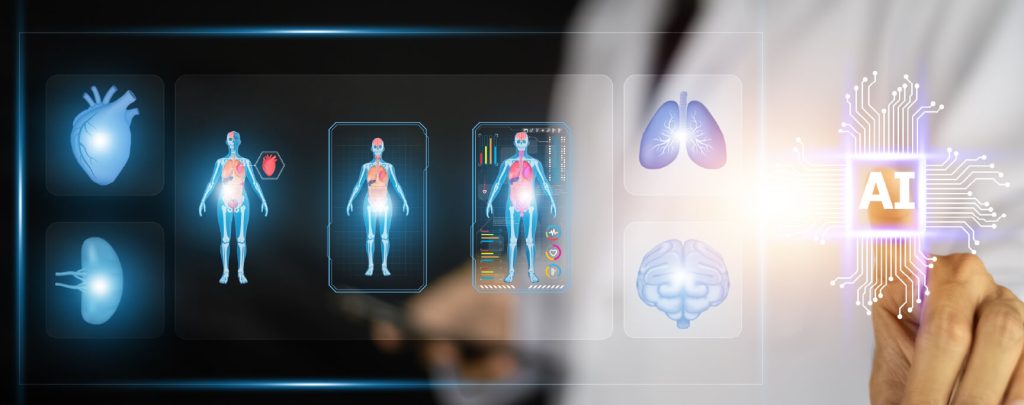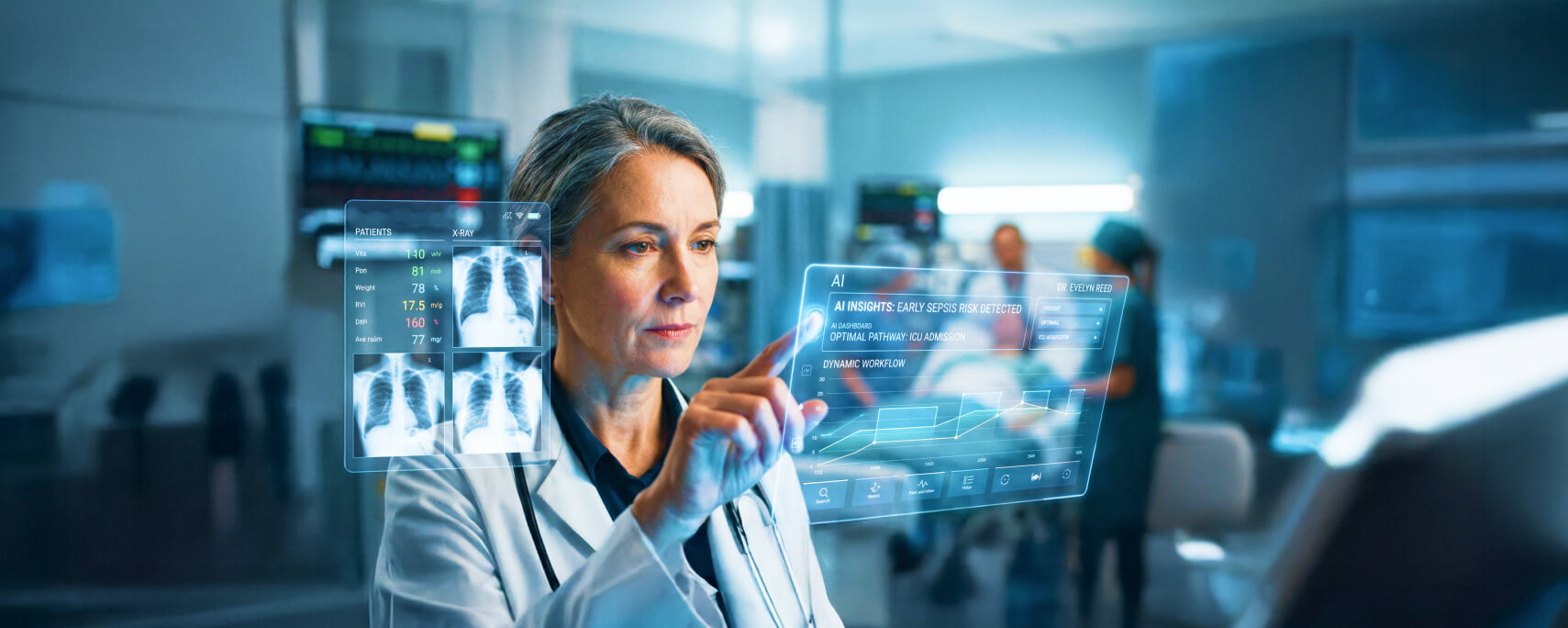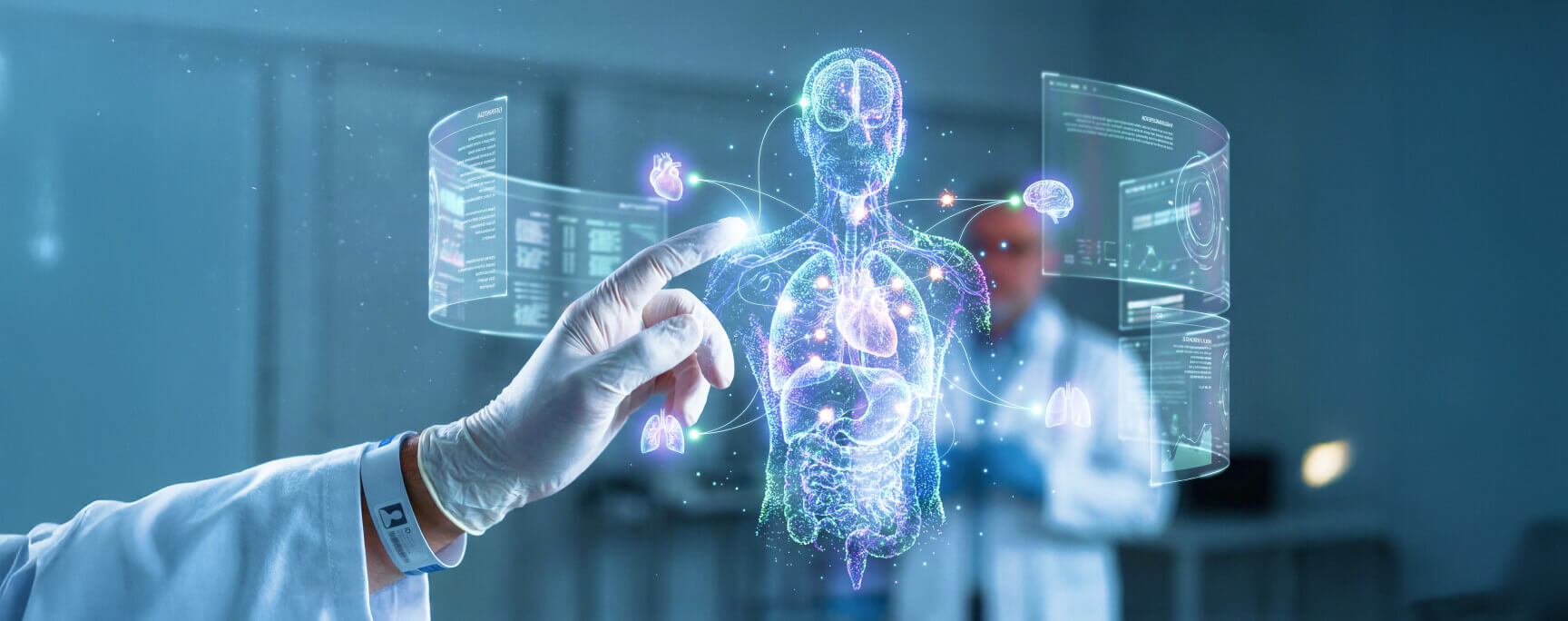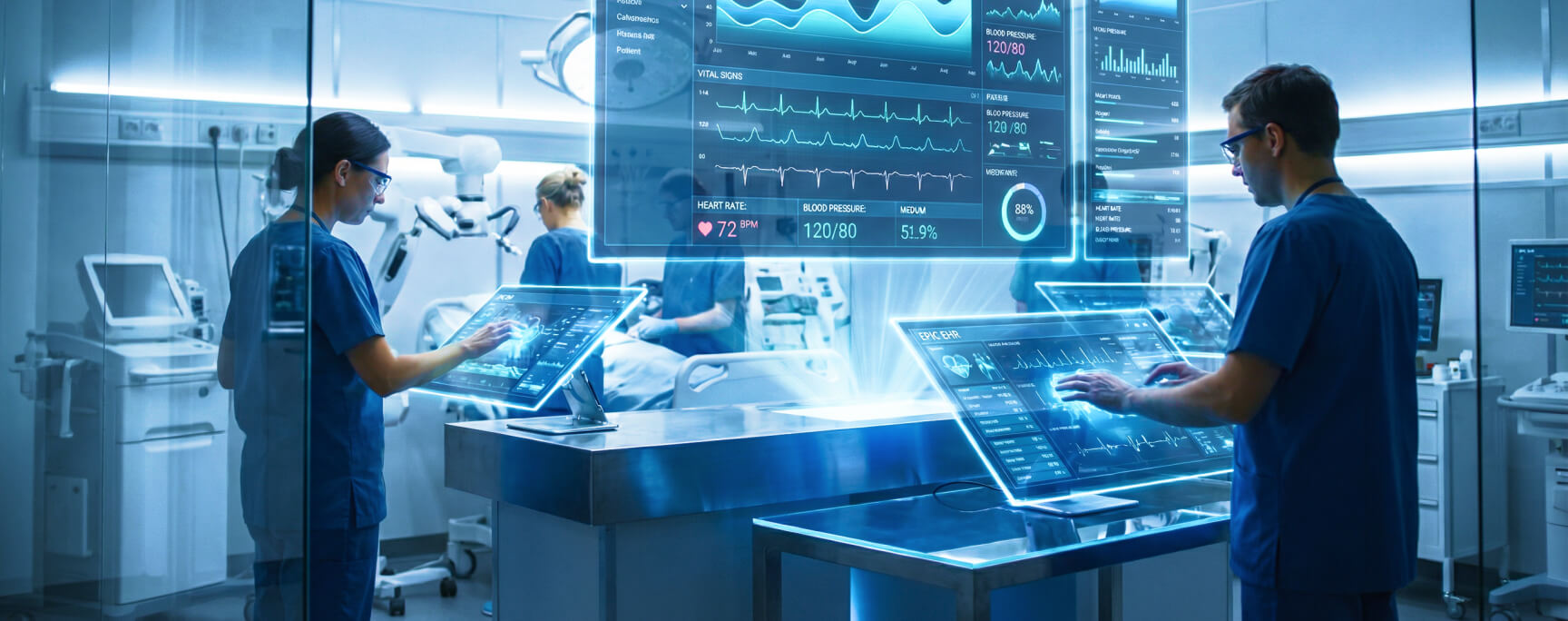The Role of AI and Machine Learning in Medical Imaging
AI and machine learning in medical imaging plays a crucial role when it comes to diagnosing and monitoring diseases. Different modalities like X-rays, MRIs, CT scans, and ultrasounds provide vital insights into a patient’s health and condition. Although traditional imaging analysis depends on radiologists and clinicians majorly, that makes it time-consuming and increases the chances of human error.
With transformations taking place in AI and machine learning (ML), advanced medical imaging has undergone a revolutionary shift. AI in imaging solutions enhances accuracy in diagnoses, reduces manual workload for medical professionals, leading to faster and smoother clinical decisions.
This blog dives deep into the significance of AI and ML, their technical perspectives, real-time examples, applications, how AI optimizes diagnostic workflow, and how Dash’s expertise can help you develop AI and machine learning in medical imaging solutions.
AI and Machine Learning in Medical Imaging
We are aware how vast the amount of imaging data AI and ML models consists of to identify patterns, detect anomalies, and help while making decisions and build advanced medical imaging solutions. Significant technologies driving these transformations are:
Deep Learning and Neural Networks
Deep learning models, mainly convolutional neural networks (CNNs), excel when it comes to analyzing medical image. CNNs analyze image pixels, extract features, and classify abnormalities with high precision. These models can detect cancerous tumors, fractures, and lung diseases with accuracy comparable to experienced radiologists.
Image Enhancement with Computer Vision
With the help of noise reduction, contrast adjustment, and super-resolution imaging, computer vision techniques enhance image quality. Moreover, AI algorithms improve low-quality scans, that makes diagnostics even more reliable in challenging environments.
Segmentation and Feature Extraction
AI algorithms segment anatomical structures, like tumors, blood vessels, and organs, assisting in disease detection. Techniques such as U-Net and Mask R-CNN enhance segmentation accuracy, that helps clinicians when it comes to quantifying disease progression.
Predictive Analytics for Personalized Medicine
AI models predict the progression of diseases and how various treatments respond to them, by analyzing imaging data over time. For instance, in oncology, by utilizing AI in analytics, providers can estimate the growth of tumor and also suggest personalized treatment roadmaps and strategies.
Explore What AI Can Do for Your Imaging Workflow!
Curious how AI and machine learning can elevate your imaging capabilities?
Let’s talk about what’s possible.AI and Machine Learning Applications in Advanced Medical Imaging
There’s no doubt how AI has transformed the picture of imaging modalities and truly helped healthcare professionals by enhancing diagnostic accuracy and workflow efficiency.
X-ray Interpretation
- AI models detect fractures, pneumonia, tuberculosis, and COVID-19 with high accuracy.
- Deep learning algorithms trained on massive datasets enhance automated screening of disease.
MRI and CT Scan Analysis
- AI helps in detecting brain tumors, strokes, and neurodegenerative diseases.
- Automated segmentation tools improve radiologists’ efficiency when it comes to analyzing 3D scans.
- AI in contrast enhancement offers sharper and clearer images, resulting in better diagnosis.
Ultrasound Imaging
- Prenatal care can be improved with the help of AI fetal monitoring.
- Early heart diseases detection can be possible with automated cardiac ultrasound analysis.
- Non-invasive diagnosis can be enhanced by implementing AI-assisted liver fibrosis detection.
Mammography and Cancer Detection
- AI improves breast cancer screening by identifying malignant tumors with fewer false positives.
- ML models classify tumor types and suggest the need for biopsy.
- AI makes early detection of prostate, lung, and colorectal cancers possible.
AI and ML Technologies: Advanced Medical Imaging Solutions
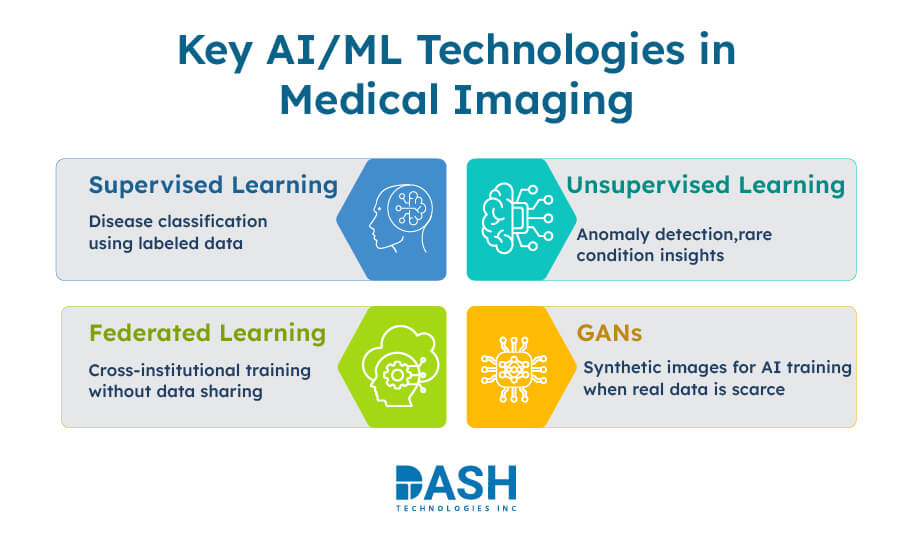
So far, we have discussed how AI and machine learning have shaped innovative medical imaging and radiology. A few applications helped us to comprehend their significance. Now, let’s talk about crucial AI and ML technologies implemented in medical imaging.
- Supervised and Unsupervised Learning
Supervised Learning: To classify diseases, labeled datasets train AI models (e.g., distinguishing between malignant and benign tumors).
Unsupervised Learning: For anomaly detection and diagnosing rare diseases, AI helps in identifying hidden patterns in imaging data. - Federated Learning for Secure AI Training
With the help of Federated learning, AI models can train across multiple hospitals without sharing any sensitive patient data. This decentralized approach improves model accuracy while maintaining privacy compliance. - Generative Adversarial Networks (GANs)
GANs generate high-quality synthetic medical images for training AI models. This technique is beneficial when real-world data is scarce, that indeed reduces dependency on manually labeled datasets.
AI in Medical Imaging: Diagnostic Workflow Optimization
AI workflow optimization in imaging enhances both clinical decision-making and operational efficiency. From intelligent triage to streamlined analysis and automated documentation, these tools are redefining how radiologists manage time-sensitive diagnoses.
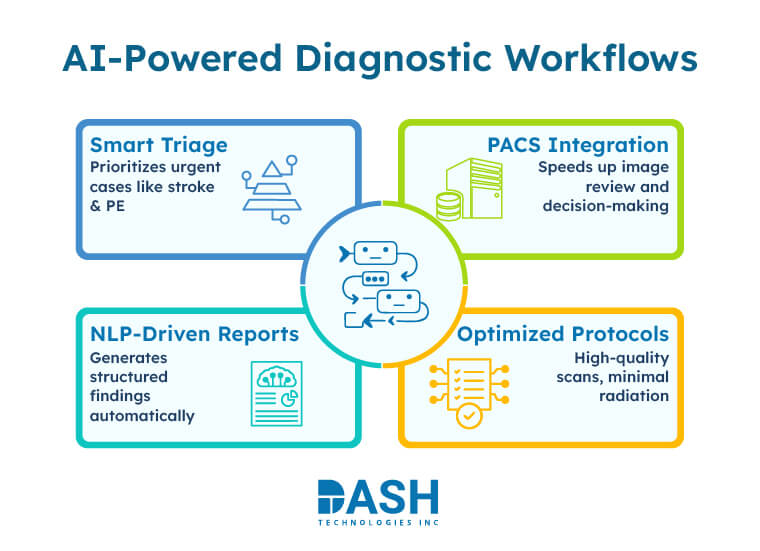
- Automated Image Triage and Prioritization
AI solutions enable intelligent triage by flagging critical cases in real time. The main goal of automated prioritization is to make sure that life-threatening conditions such as strokes and pulmonary embolisms receive immediate attention, and providers can reduce respond time in emergency situations. - AI in Radiology Workflow Automation
AI integrates with PACS (Picture Archiving and Communication Systems) to streamline image analysis.
Automated report generation with natural language processing (NLP) enhances radiology documentation.
AI assists in protocol optimization, ensuring high-quality imaging while minimizing radiation exposure.
AI and ML for Multimodal Image Fusion
Advanced medical imaging solutions often require combining data from multiple modalities to enhance diagnostic accuracy. AI-driven multimodal image fusion integrates information from MRI, PET, CT, and ultrasound scans, providing a comprehensive view of a patient’s condition.
- Cross-Modality Image Registration
AI algorithms align images from different modalities to improve visualization and comparison.
Enhances precision in oncology treatment planning, ensuring targeted radiation therapy. - AI-Driven Image Reconstruction
AI enhances low-dose CT scans by reconstructing high-resolution images with minimal artifacts.
Machine learning models accelerate MRI scans while maintaining image integrity, reducing scan times for patients.
Real-World Use Cases of AI and Machine Learning in Medical Imaging
- Google DeepMind’s AI for Eye Disease Detection
DeepMind’s AI system detects diabetic retinopathy and age-related macular degeneration (AMD) with near-human accuracy, aiding ophthalmologists in early diagnosis. - IBM Watson AI in Radiology
IBM Watson integrates AI with imaging workflows to assist radiologists in identifying lung nodules, brain hemorrhages, and other abnormalities. - FDA-Approved AI Algorithms
Zebra Medical Vision: AI for detecting osteoporosis, fatty liver, and coronary artery disease.
Viz.ai: AI stroke detection system that alerts clinicians in real-time.
Arterys: AI-powered cardiac imaging analysis, reducing interpretation time.
Conclusion
AI and machine learning in medical imaging are transforming healthcare by enhancing diagnostic accuracy, reducing interpretation time, and improving patient outcomes. From cancer detection to stroke diagnosis, AI-powered imaging solutions are reshaping healthcare delivery.
With advancements in deep learning, federated learning, and computer vision, AI is becoming an indispensable tool in medical imaging. Dash Technologies provides cutting-edge AI solutions tailored to the healthcare industry’s evolving needs, enabling MedTech companies and healthcare providers to harness the full potential of AI-driven imaging.
For those looking to leverage AI for precision diagnostics, partnering with an expert like Dash Technologies ensures innovation, efficiency, and improved patient care. Contact our experts now!
About Dash

Dash Technologies Inc.
We’re technology experts with a passion for bringing concepts to life. By leveraging a unique, consultative process and an agile development approach, we translate business challenges into technology solutions Get in touch.
